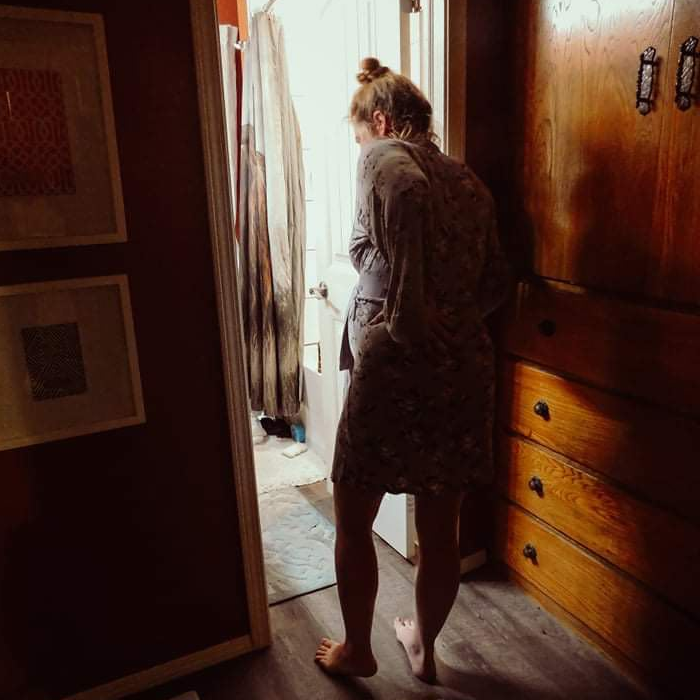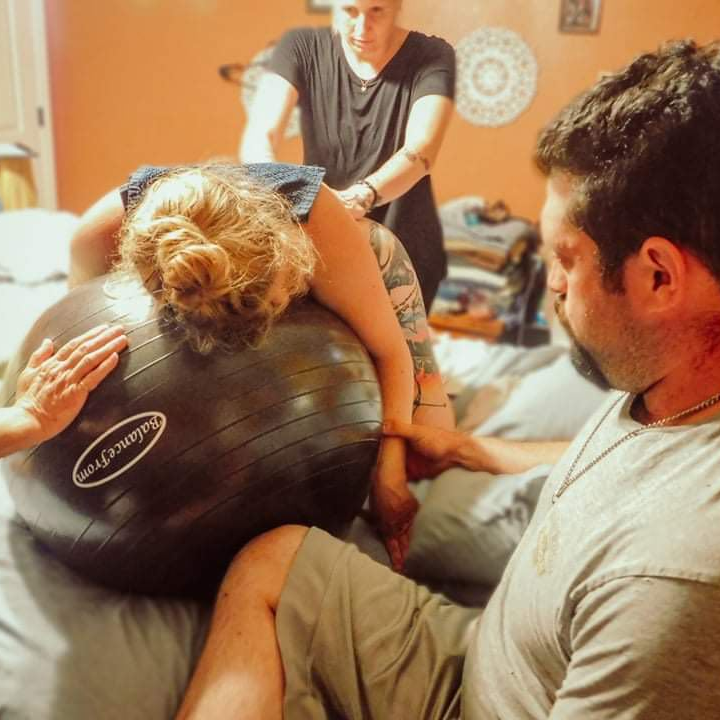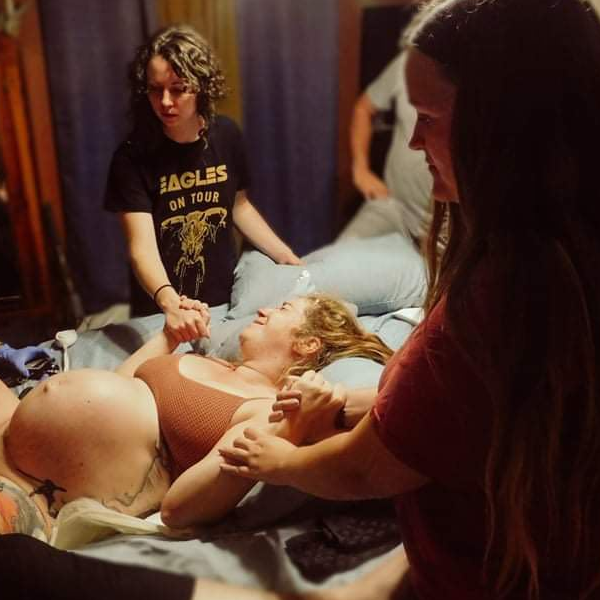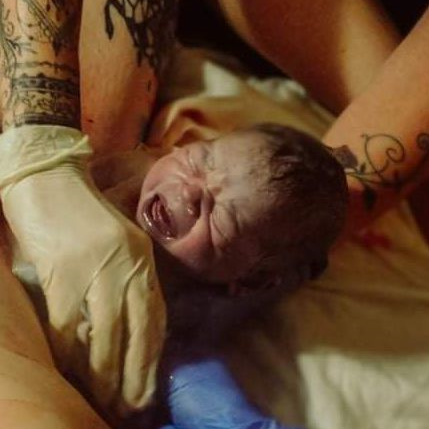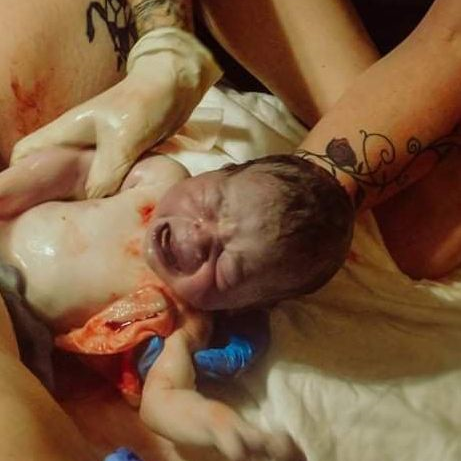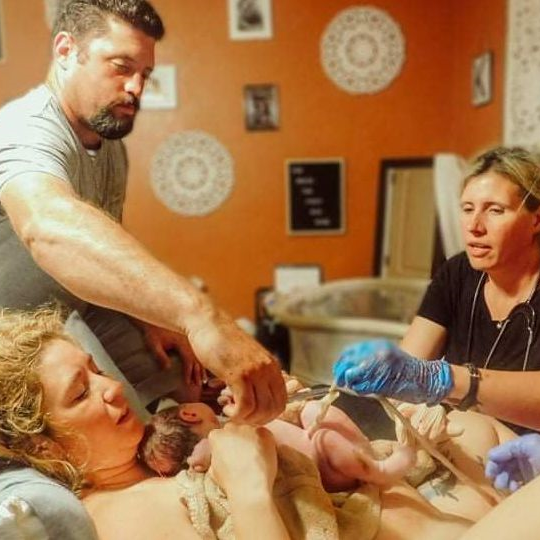Birthing Options to Consider...
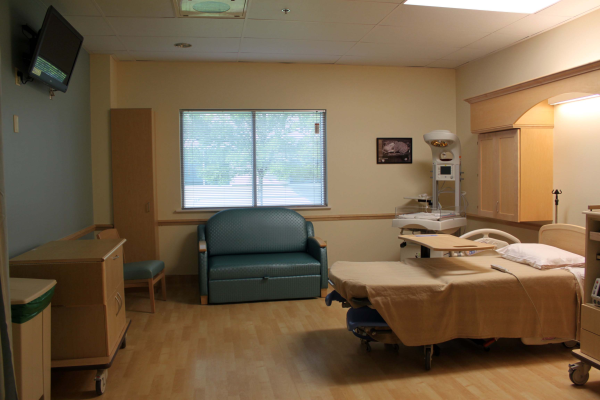
Birthing in a Hospital
Research studies have shown that the hospital is not the safest place to give birth for the average, healthy, expecting mother. C-section rates are dangerously high due to the myriad of interventions that take place during labor. And hospitals are currently very restrictive as to who can be there with the mother. This leaves her without support and advocates helping her navigate through the choices in labor that she must make.
Regardless of the length of your labor, you should expect to have turnover in hospital staff if birthing in the hospital. You may encounter a myriad of different nurses and other staff, and this could also be true of your doctor. If he or she is part of a group of physicians/OBGYN's, your birth may not be attended by the doctor you were expecting. This can be nerve-wracking to the laboring mother and can cause labor patterns to change and potentially lengthen the hours of your labor.
Both during labor and after delivery, in the hospital, there are many interventions that will undoubtedly take place. These cause additional frustration and discomfort to the laboring woman. Anything from unnecessary vaginal exams and excessive monitoring to IVs and catheters, or from tests and treatments to separation of the mother and her new baby. All of these can be both overwhelming and disappointing to a new mother. Before entering a hospital every parent should think about how the hospital birthing process will affect their labor, delivery and bonding time in the early postpartum period.

Birth Center Birth
Research indicates that choosing to give birth outside of the hospital is a safe and reasonable option for expecting mothers.
Birth centers are a concept that has really taken off in the last several years and are a great alternative to parents wanting a personalized touch and midwifery care without the pressure of turning their home into a birthing space. Birth centers are often run by midwives and contain all the comforts of home with the convenience of any necessary birth equipment for an uncomplicated delivery.
Midwives strive to make the birthing environments in their centers quiet, relaxing and professionally decorated to provide the comfort and feel of a home-like setting. Birth center birth is a very reasonable option for anyone wishing to feel at home and loved while laboring yet not quite ready to be at their own home.
About Midwives
Midwives are professionally trained to deal with unexpected situations that arise during birth including recognizing the need for more medical care. They provide comprehensive, compassionate care throughout pregnancy and the delivery process all the while remaining mindful of your specific needs.
Prenatal care with midwives is also very different than your typical doctor's office visit. Time is taken at each visit to thoroughly address your questions and concerns, to educate you about your pregnancy and to prepare you for the upcoming labor. Midwives are masters of natural birth and the perfect advocate to walk alongside you throughout your pregnancy.
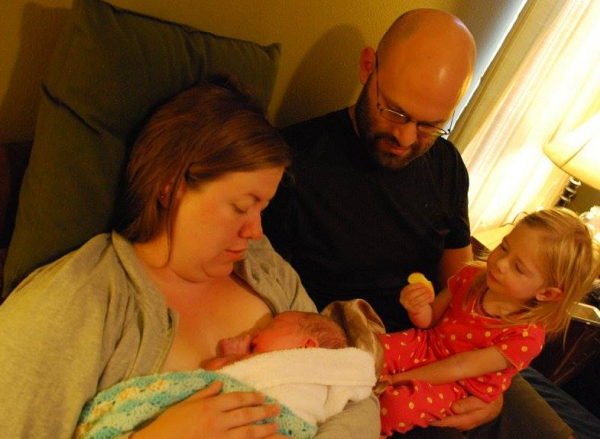
Homebirth
The vast majority of deliveries are uncomplicated and do not need medical intervention. Therefore, generally speaking, it is safe and reasonable to give birth without going to the hospital. The environment of a homebirth is very different than that of a hospital birth. At home you have control over where you labor, mobility during labor, laboring and birthing positions, lighting, environmental noise, eating and drinking, those in attendance, and much, much more. Giving birth in the comfort of your own home can relieve stresses and pressures that could otherwise impede the progression of your labor. Labors tend to be shorter and easier when women feel comfortable and are uninhibited. There is no need to impress and no pressure to progress within a certain time limit. A woman at home is free to be herself, to be intimate, and to be at liberty to do what she feels is most beneficial for her and her baby.
Most homebirths go smoothly and when they do you can easily keep your baby attached at the umbilical cord and immediately hold him/her for as long as you want. This prolonged attachment ensures that your baby receives every possible benefit from the placenta, including nutrients, blood, and oxygen. With baby still attached, you can be certain that your baby will remain right with you and not be taken somewhere for routine work. At home your midwife will check your baby's initial condition and may encourage you to begin breastfeeding right away. Breastfeeding also helps to expel the placenta naturally and in a timely manner.
Where should I give birth?
It is of vital importance that each and every woman plan to give birth in an environment that she feels safe in and with support of the people/professionals that she desires. Homebirth, hospital birth, birth center birth, midwife attended birth, unattended birth... these are all choices. No one way is right or wrong. Your birth choices should be made with careful consideration of the benefits and risks associated with them. You deserve to be treated with love and respect during your entire pregnancy, delivery and postpartum period. This is a day that you will remember for the rest of your life so make your choices wisely.
Develop an honest and trustworthy relationship with anyone who will be in attendance at your birth. If there is friction at your birth, there may be delays in progression. All of your energy and attention will need to be focused on the task at hand. Labor can be the toughest yet most satisfying job you will ever do. Doing it your way will be not only rewarding but empowering to you as a mother.
Waterbirth
Water birth is the process of giving birth (or at least
spending part of your labor) in a pool of water. Being in water provides
birthing women with privacy and autonomy, while helping them to cope with
contractions.
What are the perceived benefits of water birth?
- Pain
relief
- Relaxation
- Buoyancy
helps women to feel lighter
- Facilitates
easier position changes
- Helps
reduce stress hormones that increase pain
- Immersion
in water can help reduce anxiety related hypertension
- Reduced
risk of episiotomy and tearing
- Can
facilitate the fetal ejection reflex rather than interfere with it
- Encourages
relaxation of the pelvic floor
- Reduces anxiety by creating a feeling of privacy allowing a mother
to better listen to her natural birthing instincts and work with her body
- Encourages
a gentler arrival and transition for baby
- By
facilitating privacy and emotional and physical relaxation it
can reduce the length of labor by encouraging the release of labor
hormones
- Reduces the risk of interventions such as
synthetic oxytocin (Pitocin), epidural and assisted birth
Until you're in labor it can be hard to know for sure what
things will best help you cope with contractions. However, many women do plan
for a water birth, and make sure to take steps to keep it a viable option
should they find it helpful.
If you want a water birth, your care provider choice is very
important. Find a midwife or doctor that is experienced in providing water births.
Do your research and choose your care provider carefully to make sure you are
supported and have the options you desire available to you at your birth.
How Will My Baby Breath During A Water Birth?
When we see a birth out of the water, we often notice baby
is quickly breathing and crying. However, simply exiting the womb doesn't
trigger breathing. Babies are triggered to breath when they feel the change in
temperature and experience a change in placental perfusion. When a birthing pool is kept at a safe
temperature, a baby will continue to receive oxygen via the umbilical cord.
Once brought gently out of the tub, the change in temperature will trigger baby
to take that first breath.
VBACs
A VBAC is having a vaginal birth after having had a cesarean birth in the past. Many doctors and midwives say it's not possible or risky and do not support the trail of labor for women who have had a previous C-section. But it has been found that the majority of healthy women who have the sincere desire to push their baby out can and do just that. I support VBACs and have helped many women have success in this area. VBACs do carry additional risks and these should be discussed thoroughly before deciding on a VBAC. But when considering risks it's also important to look at the additional risks associated with multiple C-sections.
Risks associated with VBAC attempts include:
- Less than 1% possibility of uterine rupture
- Possibility of tearing or an episiotomy
- The same general discomforts associated with other vaginal deliveries such as pain around the vagina after delivery
- Possibility that a repeat C-section will become necessary even after experiencing the discomforts of labor
- Risk of infection, blood loss, or other complications associated with birth
Risks associated with a repeat cesarean include:
- There are standard risks associated with every surgery
- Longer hospital stay than the average vaginal delivery
- Possibility of developing an infection in the uterus, bladder, or skin incision
- Possible injury to the bladder, bowel, or adjacent organs
- Greater than normal blood loss and other complications associated with surgery
- Development of blood clots in the legs or pelvis after having surgery
- On-going pain & discomfort around the incision
- The possibility that the baby will have respiratory problems
- The more surgeries someone has the greater risk there is of complications. Important to consider if you are wanting many more children.
Generally speaking, with good nutrition, exercise, attentiveness to health and wellbeing and appropriate prenatal care, women who have had C-sections can and do go on to birth their babies without issue. In fact, about 60% of the women I serve in my practice have had one or more prior C-sections. And our success rate for VBACs is greater than 80%. If you are wanting to learn more about the possibilities of a successful Vaginal Birth After Cesarean (VBAC) please feel free to contact us to discuss more.
What about twins at home?
Twins account for about 33 out of every 1,000 births in the United States. Many times women are told that their twins will have to be delivered by C-section. But, this statement does not necessarily hold true.
Studies suggest that vaginal delivery with a skilled provider is just as safe as having a C-section in the case of twins. To delivery safely at home women should carry their babies to at least 37 weeks. This is considered full term and at this point babies are mature enough to safely be born without the added interventions of the hospital experience.
Contrary to what many have been told over the years, women carrying twins can and do carry to at least 37 weeks when they have been coached in the areas of proper health, nutrition, and exercise to grow babies to term. In fact, many women will even maintain their pregnancies right up until their due dates and beyond.
Knowing that homebirth is a viable and safe option to mothers carrying twins helps those families to consider all choices available to them when determining their desired place of birth. Mothers are no longer left with no choice but to consent to a C-section, they can seek out a skilled provider and deliver at a place of their choosing.
I have had the priveledge of delivering several sets of twins over the years and welcome the opportunity to discuss homebirth as an option to parents expecting more than one baby at a time.


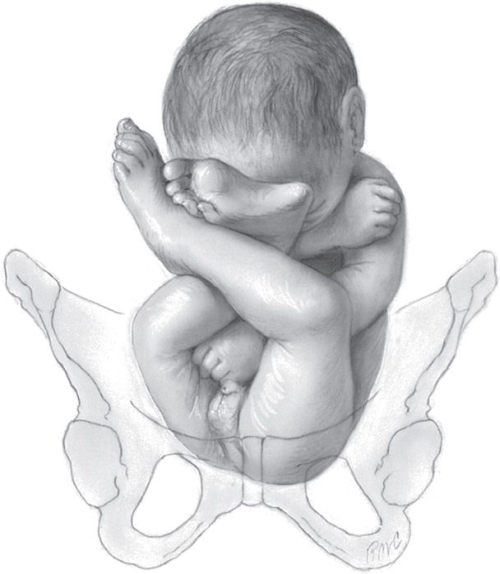
What about breech babies?
Frank breech
Just as with twins, breech babies can also safely be delivered at home with the right set of circumstances and the assistance of a care provider that is skilled in the art of vaginal breech delivery.
Studies have shown that although Apgar scores at 1 minute were lower just after delivery when comparing breech versus head down babies delivered vaginally, 5 minute Apgar scores were just as good in each group. This means that babies being born breech take an extra minute or 2 to come around and become active and alert after their delivery but this causes not long lasting effects and, in fact, they are quite vigorus by 5 minutes after delivery.
Mothers have been told for years that they would have to have a C-section if their baby was breech. This is because typically speaking doctors are no longer skilled in the art of breech delivery. However, midwives have continued the tradition of treating breech as a variation of normal and have tought breech delivery all through the ages. Midwives are usually skilled in breech and not only willing but able to offer vaginally breech delivery to mothers wishing to avoid the C-section that they would be subjected to in the hospital.
I delivered my own child breech outside of the hospital many years ago. It was an amazing birth experience and one that prompted me to want to be skilled in this area so I could offer homebirth as an option for other mothers wanting a homebirth even with a breech baby.
A Journey Through Homebirth
Courtsey of Michaela, Robert and Loxlee July 2021








